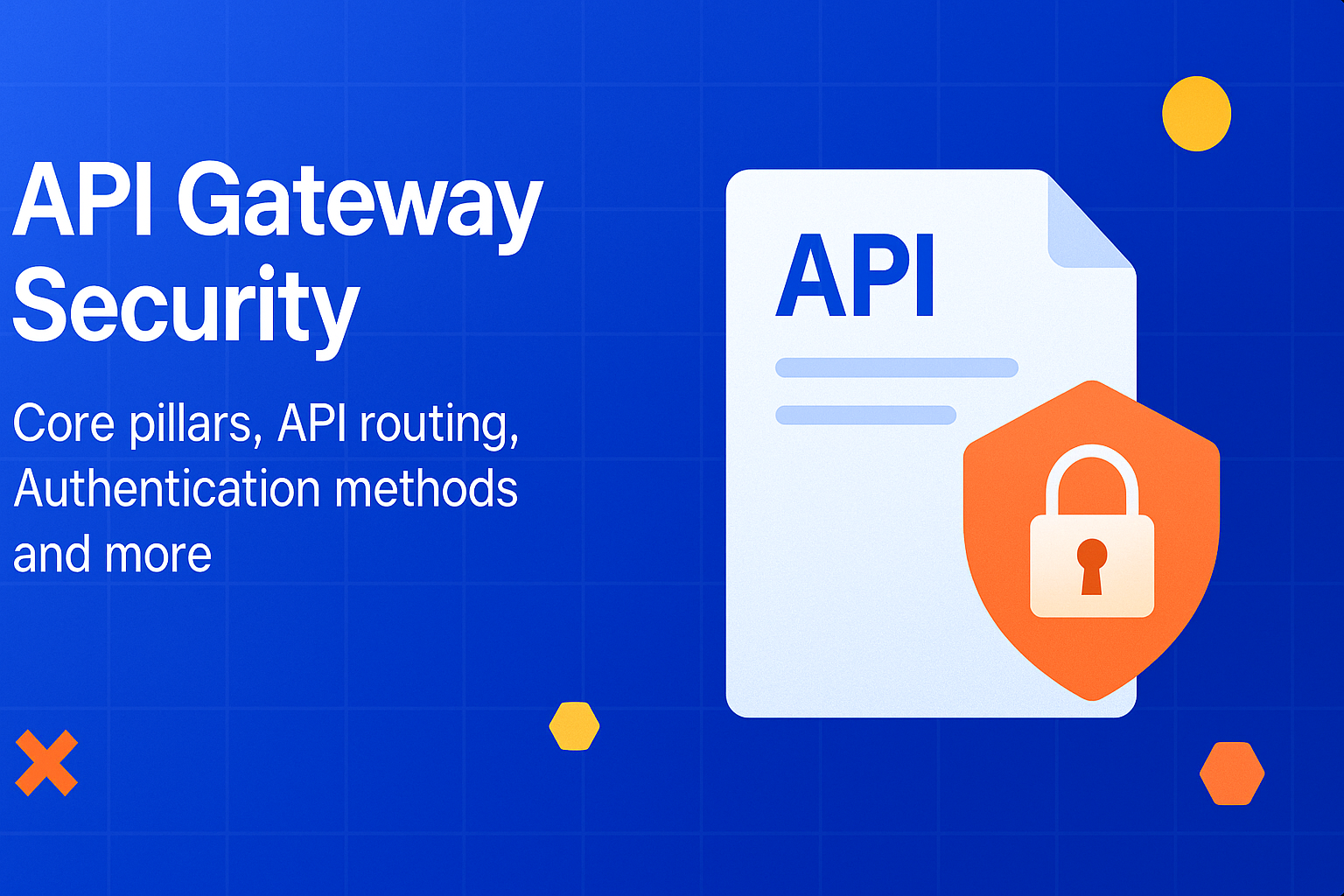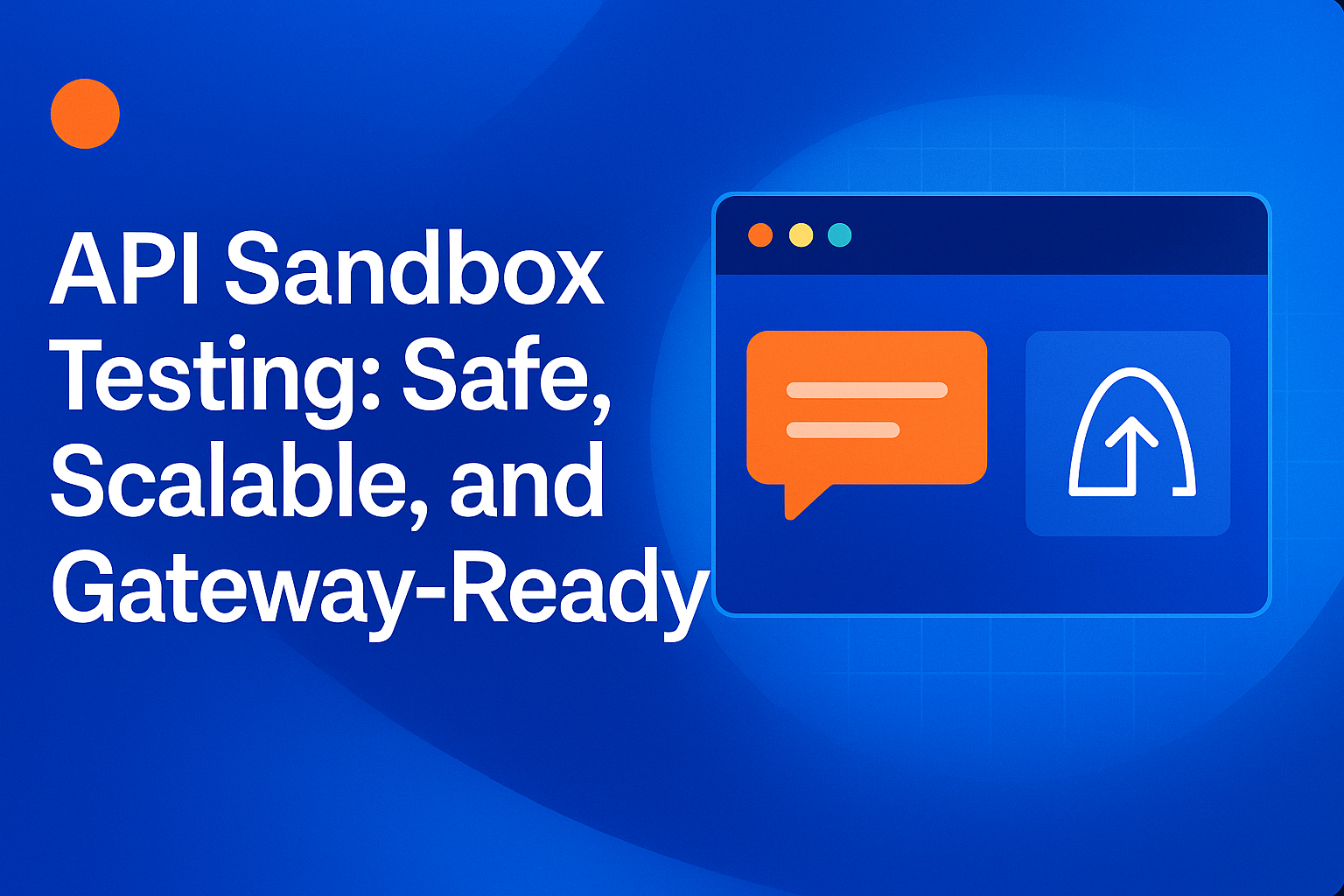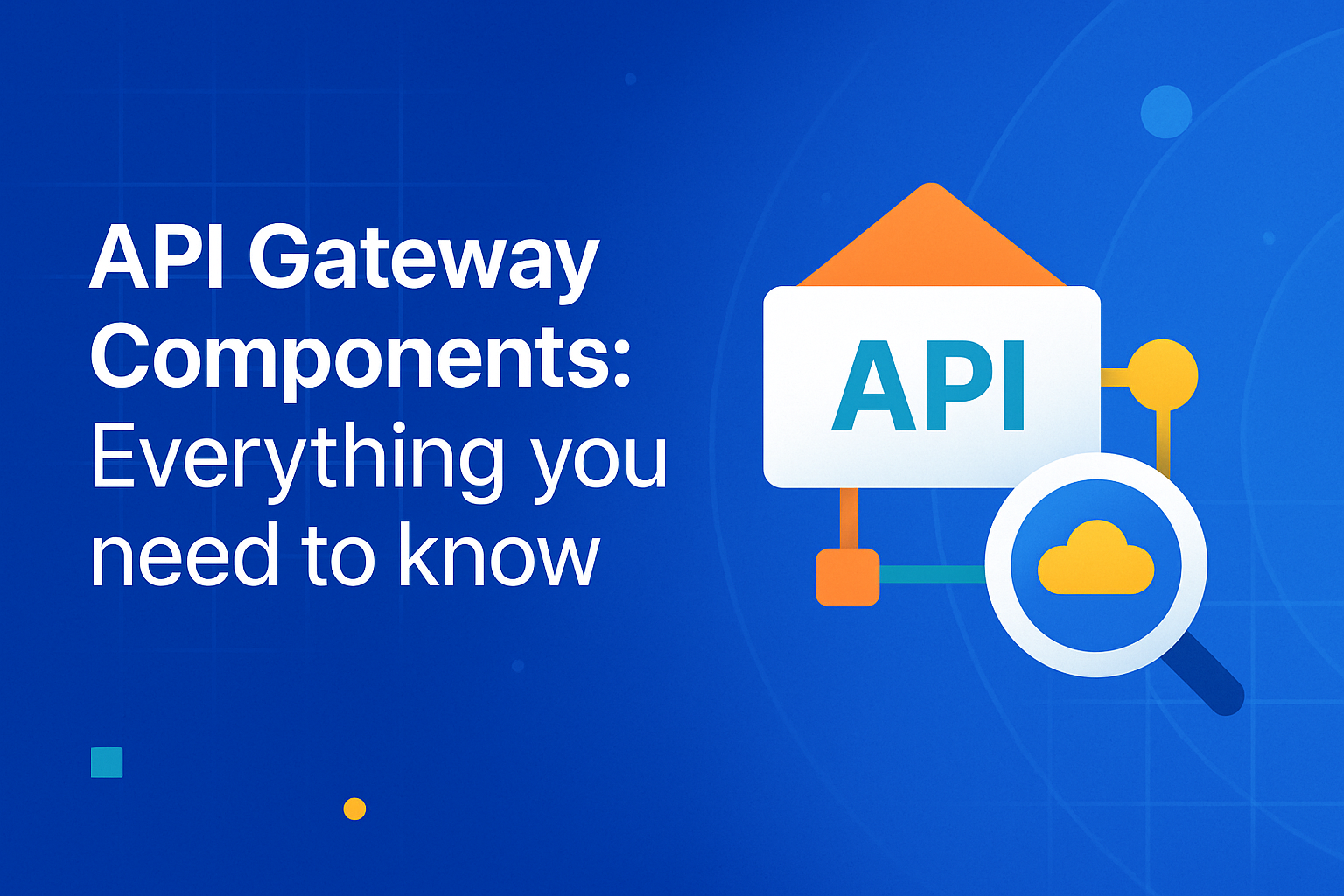Blog
API Gateway Security: Core Pillars, API routing, Authentication methods and more
Updated on:

APIs have become the connective tissue of every digital enterprise, but that also makes them prime targets for attackers. Sitting at the intersection of every request and response, the API gateway is your first and most important line of defense. It’s where authentication, authorization, routing, and rate limiting come together to secure traffic and enforce trust. Yet, many teams still treat gateway security as an afterthought until a breach exposes the gaps.
A recent industry report found that 68% of organizations experienced an API security breach in 2024 that resulted in costs exceeding $1 million, underscoring the substantial risks facing digital enterprises today. This highlights the importance of taking API Gateway security very seriously.
So, in this blog, we’ll unpack what API gateway security really means, how policies, routing, and authentication mechanisms like Basic Auth, OAuth2, and mTLS work in practice, and the steps to build a resilient, zero-trust API ecosystem.
What is an API gateway & where does security fit
An API Gateway acts as the single, intelligent entry point for all API traffic. Instead of each client calling multiple backend services directly, the gateway routes, transforms, and manages those requests efficiently. It hides backend complexity, ensures consistency across APIs, and allows teams to centralize policies that improve performance and governance. In short, it’s the command centre of your API ecosystem.
But in modern architectures, the gateway is far more than a router, it’s the security checkpoint of your digital infrastructure. Every incoming request is inspected, authenticated, and authorized before it touches any backend service. The gateway becomes the layer where trust is established, traffic is controlled, and compliance is enforced across internal, partner, and external APIs.
Where security fits within an API Gateway:
- Transport security: Enforces HTTPS/TLS or mTLS for encrypted communication.
- Authentication: Validates identity via API keys, Basic Auth, OAuth2, or JWT.
- Authorization: Applies fine-grained access policies and role-based controls.
- Rate limiting & throttling: Prevents abuse, denial-of-service, and overuse.
- Traffic inspection: Monitors headers, payloads, and patterns for anomalies.
- Audit & logging: Captures every call for compliance, forensics, and analytics.
.png)
Threat landscape: What you’re protecting against
APIs have become prime targets because they expose data and functionality directly to consumers and partners. A single misconfiguration or weak authentication can open doors to massive exploitation. Understanding the threats your API gateway must defend against is the first step toward building an effective security posture.
1. Denial of Service (DoS) and traffic flooding
Attackers often overwhelm APIs with excessive requests, exhausting server resources and bringing systems down. The API gateway must detect and throttle such spikes before they cripple backend services.
Real-world incident: In 2018, GitHub faced one of the largest recorded DDoS attacks, peaking at 1.35 Tbps, where malicious traffic was mitigated at the gateway and CDN layer before it reached internal systems.
2. Broken authentication and weak credentials
Weak or improperly implemented authentication lets attackers impersonate users or services. This includes poor token validation, missing expiry checks, or reliance on outdated Basic Auth.
Real-world incident: In 2021, Peloton’s API exposed private user profiles due to missing authentication checks, allowing unauthenticated users to fetch sensitive account details.
3. Injection and payload manipulation
Attackers inject malicious payloads, SQL, XML, or command code through API requests to exploit backend systems. The gateway should validate inputs, enforce the schema, and sanitize payloads before forwarding them.
Real-world incident: The Log4Shell vulnerability in 2021 showed how unsanitized input sent via APIs could trigger remote code execution across thousands of enterprise systems.
4. Broken object-level authorization (BOLA)
This occurs when APIs fail to properly enforce access controls, allowing users to access other users’ data simply by changing an ID or parameter. Gateways can detect and block these unauthorized requests.
Real-world incident: The Facebook 2018 breach exposed millions of user photos when attackers exploited a BOLA flaw by altering object identifiers in API calls.
5. Misconfiguration and overexposed endpoints
APIs sometimes expose internal routes, test endpoints, or verbose error messages that leak sensitive system details. Gateways must mask backend topology and enforce consistent security policies.
Real-world incident: In 2022, Twitter’s API misconfiguration allowed attackers to match 5.4 million accounts with phone numbers and emails scraped through an exposed endpoint.
Core security pillars for API gateways
Securing APIs isn’t just about preventing attacks, it’s about creating a trusted environment where every request is authenticated, authorized, and monitored. A well-implemented API gateway enforces these controls consistently, ensuring that both external and internal traffic follow the same set of rules. These pillars form the foundation of modern gateway security.
1. Transport and network security
At the most fundamental level, the gateway ensures that all communication is encrypted and trusted. Using HTTPS with TLS or mTLS protects data in transit and verifies both client and server identities. Network-level safeguards, like IP allowlisting, WAF integration, and segmentation, further isolate critical systems and prevent unauthorized access.
2. Authentication and access control
Authentication establishes who is making the request, while access control defines what they can do. The gateway acts as the enforcement point for credentials—validating API keys, Basic Auth, OAuth2 tokens, or JWTs. Role-based and attribute-based access policies ensure that only authorized consumers interact with specific APIs or resources.
3. Rate limiting and throttling
An essential part of gateway security is managing how often APIs can be called. Rate limiting and throttling protect backend systems from overload, brute-force attacks, and abuse. By setting per-user or per-application quotas, the gateway ensures fair usage, preserves performance, and maintains predictable service behaviour under varying loads.
4. Input validation and payload inspection
Every incoming request must be verified before reaching backend logic. Gateways validate parameters, enforce JSON or XML schemas, and scan payloads for malicious patterns or oversized data. This helps prevent injection attacks, command execution, and data exfiltration attempts, forming a strong line of defence at the perimeter.
5. Monitoring, logging, and governance
Security without visibility is incomplete. The gateway captures detailed logs, metrics, and traces for every API transaction, providing a single pane of glass for threat detection and compliance. With centralized monitoring, teams can detect anomalies, audit user behaviour, and continuously refine security policies across the API estate.
API routing and gateway security in practice
An API gateway isn’t just a security layer; it’s the traffic director of your entire system. Every request passes through routing logic that determines where it is routed, how it’s transformed, and which security checks apply along the way. When routing and security work together, the result is a resilient, well-governed API ecosystem where access is controlled and data is protected by design.
- Intelligent routing with security context: Routing decisions should always be tied to trust. The gateway routes requests based on identity, scope, or origin, not just URLs. Internal APIs can be routed through secure private channels, while public ones use stricter rate limits and validation. By linking routing rules with authentication tokens, the gateway ensures that only verified clients reach specific backend services.
- Segmentation of internal, partner, and external APIs: Different audiences require different levels of control. Internal APIs may allow direct service-to-service communication under mTLS, while partner or external APIs go through layered authentication and approval. Gateways enforce segmentation, isolating trust zones, applying separate rate limits, and masking internal endpoints, so exposure is always intentional, never accidental.
- Policy enforcement at every route: Every route in the gateway should carry a defined security policy, authentication type, data validation, and quota rules. These policies ensure consistency across the organization and eliminate guesswork for developers. A route that handles payments, for example, might require OAuth2 and mTLS, while one serving documentation could rely on API keys with lower sensitivity.
- Unified logging and traceability: Routing without visibility can hide potential threats. The gateway’s centralized logging captures every route invocation, who called what, when, and from where. This enables full traceability for auditing, anomaly detection, and compliance. Over time, these insights feed into adaptive policies that strengthen both routing and security continuously.
- Automated failover and resilience: Routing logic also contributes to security by ensuring availability. If a backend service becomes unavailable or slow, the gateway can reroute requests to fallback instances or cached responses. This prevents cascading failures and reduces the attack surface during downtime, maintaining consistent performance and trust.
Authentication methods: From basic auth to zero-trust
Authentication is the cornerstone of API gateway security; it’s how the system verifies identity before granting access. Over the years, methods have evolved from simple static credentials to dynamic, token-based systems that adapt to user context. The goal is no longer just verifying who is calling, but also how and under what conditions they should be trusted.
In modern architectures, zero-trust has replaced perimeter-based security. Every request, even from known sources, must re-establish trust through strong credentials, continuous validation, and contextual checks. The API gateway becomes the enforcer, ensuring that authentication is not a one-time event, but an ongoing guarantee of identity and intent.
Common authentication methods in API gateways:
- Basic Authentication: The simplest form, username and password encoded in each request header. Suitable only for internal or low-risk APIs, as credentials are static and easily compromised.
- API Keys: Lightweight tokens tied to applications or users, providing identification without personal credentials. Often combined with rate limits for usage control.
- OAuth 2.0: A delegated authorization framework enabling third-party access via tokens instead of passwords, ideal for partner or public APIs.
- JWT (JSON Web Token): Self-contained tokens carrying user claims; they allow stateless, scalable verification across microservices.
- mTLS (Mutual TLS): Both client and server authenticate through certificates, ensuring trusted machine-to-machine communication.
- Zero-Trust Authentication: Builds on the above by continuously validating device, identity, and context for every request, regardless of network location.
Policy design & enforcement at the gateway
Security in an API gateway is not a one-time setup—it’s a structured process. Designing and enforcing policies ensures that every API, route, and consumer follows consistent rules for authentication, access, and governance. A well-defined policy framework allows enterprises to manage risk proactively while maintaining developer agility.
Follow these key steps to design and enforce effective gateway policies:
1. Define authentication standards
Start by deciding how clients will prove their identity. Choose from API keys, Basic Auth, OAuth2, JWT, or mTLS based on sensitivity and exposure level. Standardize these methods across all APIs so developers and partners follow a uniform process.
2. Establish authorization rules
Once identity is confirmed, determine what each user or system is allowed to access. Use role-based (RBAC) or attribute-based (ABAC) controls tied to tokens or claims. This prevents privilege misuse and ensures fine-grained access management at the gateway layer.
3. Implement rate limiting and quotas
Define how many requests each client can make per second, minute, or day. This protects against abuse, ensures fair usage, and shields backend systems from overload. Apply dynamic throttling policies for high-traffic or public APIs.
4. Enforce data validation policies
Inspect every incoming request to verify its structure and content. Gateways should validate schemas, sanitize input parameters, and reject oversized or malformed payloads. This step guards against injection and data exfiltration attacks.
5. Configure routing and transformation rules
Define how traffic flows between clients and backend services. Secure routing policies can mask internal endpoints, strip sensitive headers, or transform payloads before forwarding. This keeps internal architecture hidden and data exposure minimal.
6. Enable logging and audit trails
Set up comprehensive logging for every API call, capturing timestamps, tokens, and status codes. Logs feed into SIEM or analytics tools for monitoring, anomaly detection, and compliance audits. Visibility is the backbone of continuous security.
7. Version and review policies regularly
Policies must evolve as APIs grow. Maintain version control for all policy definitions and schedule periodic reviews to adapt to new threats or compliance requirements. Automation tools can help enforce consistency across environments.
Common mistakes & pitfalls in API gateway security (And how to avoid them)
Even the most advanced API gateways can become weak links when security is misconfigured or inconsistently enforced. Small oversights—like skipping authentication checks or forgetting to log requests, can lead to major breaches. Here are the most common pitfalls teams face and how to avoid them.
- Skipping authentication on internal APIs: Internal services often get overlooked, but attackers exploit lateral movement. Always enforce authentication and authorization, even for internal traffic.
- Using Basic Auth for external or public APIs: Static credentials are easily intercepted or reused. Replace Basic Auth with OAuth2 or mTLS for stronger identity assurance.
- Inconsistent policy enforcement across environments: Dev, staging, and production often have mismatched rules. Automate policy deployment to ensure uniform enforcement everywhere.
- Neglecting rate limits and quotas: Without throttling, APIs are vulnerable to brute-force and DoS attacks. Set per-client quotas and dynamic throttling to control traffic spikes.
- Ignoring payload validation: Unchecked inputs can enable injection and data corruption. Use schema validation and input sanitization at the gateway edge.
- Poor logging and monitoring practices: Without visibility, breaches go undetected for weeks. Enable detailed API logs, integrate them with SIEM tools, and review anomalies regularly.
- Exposing internal endpoints or verbose error messages: Revealing backend details helps attackers map your system. Mask internal routes and standardize error responses at the gateway.
- Failure to update and version policies: Outdated configurations can break compliance and security. Review policies quarterly and version them to maintain auditability.
Why you should consider DigitalAPI’s Helix API gateway for your enterprise needs?
In today’s API-first, hybrid-cloud world, your gateway needs go well beyond simple routing. You’re looking for a solution that secures, scales, and governs your API estate while keeping developer experience high and operational overhead low. Helix Gateway is built with that exact profile in mind, optimised for modern architectures, enterprise security, and faster time-to-value.
1. Rapid deployment with minimal DevOps overhead
Helix is a “plug & play” gateway that supports design, routing, security policy enforcement, and monitoring in minutes rather than weeks. For enterprises still struggling with heavy legacy gateway setups, the ease of deployment means you can get your security controls live much faster, reducing the window of exposure and accelerating ROI.
2. Built-in security & governance controls
Security isn’t an afterthought with Helix. The platform includes organisation-wide security policy enforcement, authentication (JWT, OAuth2), traffic control (rate limiting, quotas), and CORS settings included out of the box. This alignment means that your gateway becomes a consistent enforcement point across your internal, partner, and external APIs, which supports the core pillar of “authentication & access control” from your blog structure.
3. Unified visibility and observability across the API estate
Enterprises often struggle with fragmented gateways across clouds and teams. Helix counters this with a unified control plane and dashboard, giving you visibility into every API route, security policy, traffic metric, and governance control. For your audience of API architects and C-suite buyers, that means fewer blind spots, better compliance, and easier incident response.
4. Monetisation and productisation of APIs
While many gateways stop at securing and routing, Helix goes further by enabling you to publish APIs as products via a marketplace. This is especially relevant in a banking or fintech context where APIs can become revenue-generating assets, not just internal utilities.
5. Future-ready architecture (AI agent-ready, hybrid/edge enabled)
Helix supports the newer requirements of model-context protocol (MCP) and AI-agent consumption, and is built for deployment in public cloud, private data centres, or edge environments. For organisations looking to stay ahead, especially in agentic AI, partner ecosystems, or multi-cloud setups, this architecture ensures the gateway won’t become a bottleneck or legacy liability.
.png)
FAQs
1. What is an API gateway security policy?
An API gateway security policy is a set of rules that govern how API traffic is authenticated, authorized, encrypted, and monitored. It enforces consistent protection across all endpoints by defining access control, rate limits, data validation, and logging parameters, ensuring every request adheres to enterprise security, compliance, and performance standards across internal, partner, and external APIs.
2. How does routing work in an API gateway, and why is it relevant to security?
Routing determines how API requests are directed to backend services. In secure gateways, routing rules are tied to identity, permissions, and context, ensuring that only authorized traffic reaches sensitive endpoints. Secure routing prevents internal exposure, applies consistent policies, and helps segment internal, partner, and external APIs for better control and risk isolation.
3. Is Basic Auth sufficient for securing APIs in a gateway?
Basic Auth uses static credentials encoded in headers, making it easy to implement but highly insecure for modern systems. It lacks token rotation, encryption strength, and granular access control. While acceptable for low-risk internal APIs, it should be replaced with OAuth2, JWT, or mTLS for external or critical services requiring scalable and context-aware authentication.
4. What is the difference between authentication and authorization in a gateway context?
Authentication verifies who the client is, confirming identity through API keys, OAuth tokens, or certificates. Authorization defines what the authenticated client is allowed to do, using scopes, roles, or policies. The API gateway enforces both sequentially to ensure that verified clients only access permitted APIs and operations, maintaining least-privilege access across the ecosystem.
5. How often should we audit deprecated APIs behind a gateway?
Deprecated APIs should be audited at least quarterly, or immediately before major product releases. Regular reviews help identify inactive endpoints, unused credentials, and unpatched routes that could expose vulnerabilities. The API gateway’s analytics and logging features simplify this process, ensuring outdated APIs are retired, masked, or isolated to maintain overall security hygiene.
6. What KPIs should we track for gateway security?
Key metrics include authentication failure rates, blocked or throttled requests, latency per route, number of policy violations, and percentage of APIs using encryption. Additional KPIs, like average response time, token expiry compliance, and anomaly detection trends, provide insights into security posture, helping teams refine policies, monitor health, and maintain consistent trust boundaries across the API ecosystem.
You’ve spent years battling your API problem. Give us 60 minutes to show you the solution.
.svg)







